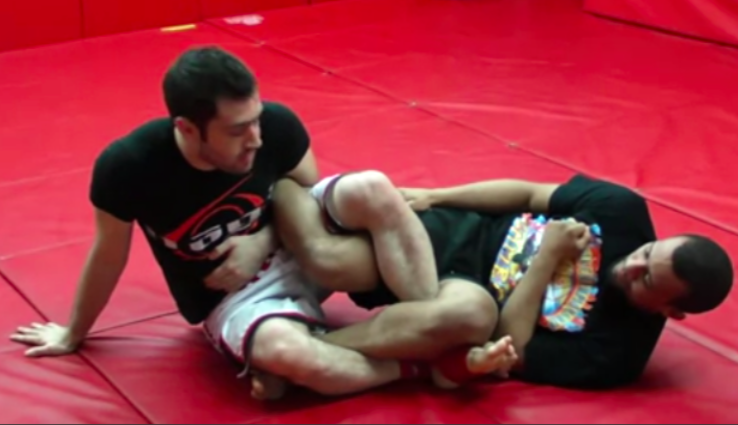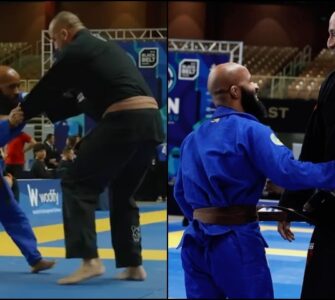Knee reaping is illegal in IBJJF tournaments and tournaments that run under the IBJJF rules. However, it’s also a commonly misunderstood position that can get the competitor disqualified from a tournament – without him clearly knowing what had happened.
So, if you want to have a great time competing, it’s very important to understand what knee reaping actually is and is not. BJJ black belt, Drew Weatherhead, explains it in a clear fashion below.
What „Is“ Knee Reaping At All?
Let’s first understand what knee reaping actually is. Drew explains that you need to pay attention to three points when you’re attacking your opponent’s leg: their hip, their knee and their ankle.
Knee reaping happens when you isolate their hip and ankle, all the while you’re twisting the outside of their knee inwards.
Now that we’ve understood what constitutes a knee reap, let’s take a look into the positions, situations and subtleties which lead to it.
Knee Reaping Positions
Single Leg X Guard/Ashi Garami
Drew first shows a situation from the Single Leg X Position (Ashi Garami). Here, his foot is on his training partner’s hip and his hand is isolating his partner’s foot – so far so good, the knee is fine in that position.
However, the knee reap from this position arises in two cases:
1) The foot on the hip crosses the centerline of the attacked leg; towards the centerline of the opponent’s body.
2) When turning towards the other leg instead of away from it.
One other way to get penalized or DQ’d for knee reaping is in a situation where you have the Single Leg X Guard with your opponent in a standing position. All you have to do, Drew explains, is to cross the centerline of your opponent’s hip – you don’t even have to touch their foot, as the gravitation is isolating it by itself.
Saddle/Inside Sankaku/Honey Hole/411
The Saddle is a popular leglock position. You have your opponent’s hip isolated with a triangle… And the moment you touch the foot of the leg you are connected to, it is a knee reap! Never touch the foot of that leg!
But, what can you do from the Saddle then? Drew demonstrates that you can turn your hips over the leg you’re connected to, and that you can then go for the kneebar. One other thing that you can do is that you can attack the other leg; feel free to catch that leg’s ankle and start hitting submissions on it.
What If My Opponent Is A Jerk?
But, what if you have done everything in line with the rules and your opponent decides to be a jerk – moving your foot across the centerline of their hip?
Fear not, for the rules have predicted this as well! Since your opponent is the one forcing an illegal position – sure, dangerous for themselves but still forcing it so as to get an unfair advantage – it’s them that will be disqualified.
What Are Some Dangerous, But Legal Options?
Drew points out that there are still a number of leglock positions that are highly dangerous, but legal under the IBJJF ruleset.
For example, the 50-50 position. One situation that can arise from it is when your opponent stands up to the upper position, and then starts pushing your foot towards you with their hips and bodyweight. This can lead to your knee getting blown out, but it is a legal move – so beware of it.
Another position is the „Captain Morgan“ one, from which you can get your knee blown out „legally“ as well.
Drew explains it in great detail on the video below:

















